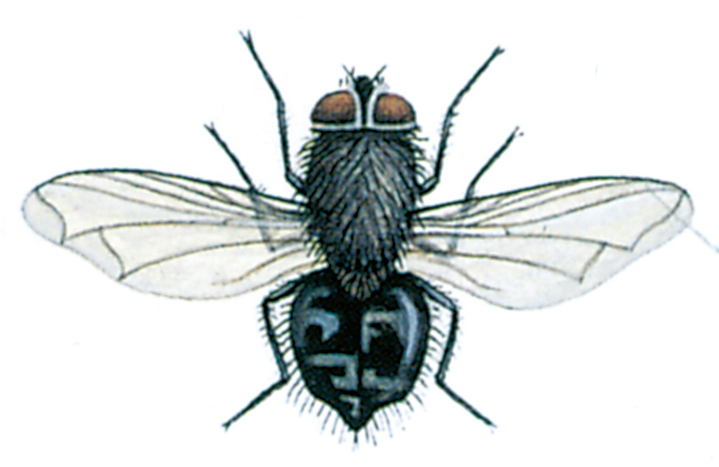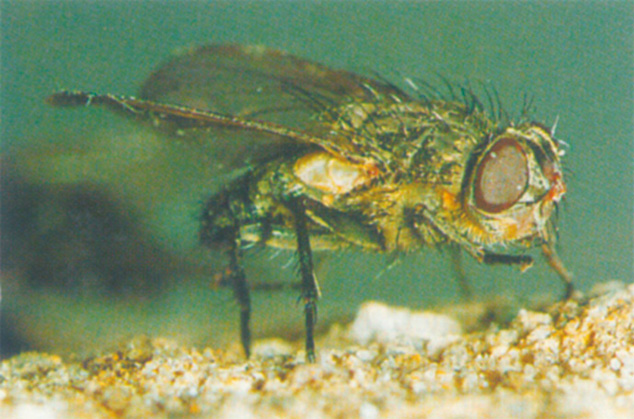(Latin: Pollenia rudis)

In many houses large, greyish flies may appear during the winter. In some places they may occur in their thousands, and constitute an absolute plague as they buzz around lamps and fall into the tea cups, and so on. These are the so-called cluster flies, which are actually related to the blowflies. They are not iridescent like the ordinary blowflies, but are more like large houseflies, and can be recognized by the numerous small, golden hairs on the thorax. Their life history is quite different from that of the ordinary blowflies, and they do not visit foodstuffs in the house.
They lay their eggs in the soil, and the newly hatched larvae bore their way into earthworms, where they live as parasites. During the summer the adult flies remain outside, often visiting flowers where they suck nectar. In the late autumn they look for a place to spend the winter and this is when they sometimes gather in large numbers on walls warmed by the sun before they come indoors.

They often gather in clusters in cool, unheated areas, including lofts. They have a tendency to return to the same house year after year, and they evidently prefer high-lying buildings. If the place they have chosen remains cool throughout the winter the flies will stay motionless until the spring, when they are woken by the warmth and move out into the light. On the other hand, if there is a warm spell during the winter these flies may become active and start to crawl around. This often happens when a holiday house is warmed for a spell during the winter.




